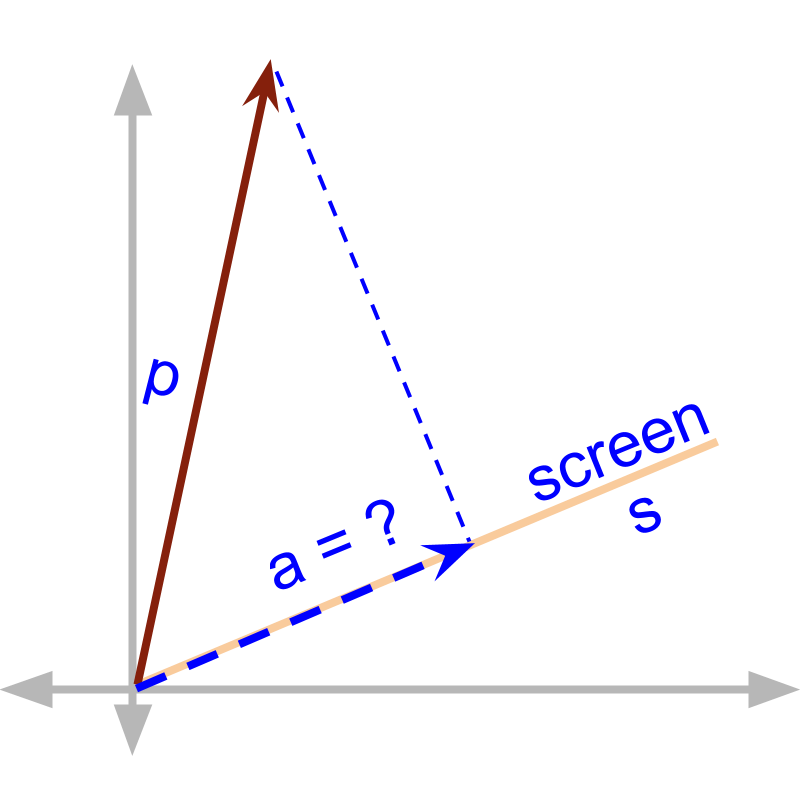
what you'll learn...
Overview
Cross Product With Direction Removed
» By definition, cross product is a vector
» Some applications may specify a scalar in the multiplication of components in perpendicular. In such cases, the direction is removed from the vector cross product.
example

An object by position vector is at a distance from a screen. The screen is given by unit vector . The distance of the object from the screen is a vector that terminates at the object and at angle to the screen.
Note: In physics - Kinematics, distance and displacement are defined as scalar and vector. In coordinate geometry, distance from an object to another is a vector.
Given and the screen . The magnitude of distance of object from the screen is
An object by position vector is at a distance from a screen. The screen is given by unit vector We saw that the distance is a vector and the length of the distance is . The direction of the distance vector is 'unit vector along '.
Another Example
The magnetic field is given by (a vector quantity).
The velocity of the wire moving in the magnetic field is (a vector quantity).
The EMF (electro-magnetic force or the voltage) induced in the wire of length is given by
Note that the EMF is a scalar quantity.
In this, has component parallel and another component perpendicular to the magnetic field . Only the perpendicular component interacts with the magnetic field and results the EMF. That is the reason, the equation has cross product.
The created EMF is by definition a scalar quantity. So, the magnitude of the cross product is used.
summary
Distance using Cross Product: For a vector and a direction given by unit vector , the magnitude of distance of point given by to the direction is .
Vector cross product, by definition, is a vector. Depending on the application requirement, the direction can be removed.
Outline
The outline of material to learn vector-algebra is as follows.
Note: Click here for detailed outline of vector-algebra.
• Introduction to Vectors
→ Introducing Vectors
→ Representation of Vectors
• Basic Properties of Vectors
→ Magnitude of Vectors
→ Types of Vectors
→ Properties of Magnitude
• Vectors & Coordinate Geometry
→ Vectors & Coordinate Geometry
→ Position Vector of a point
→ Directional Cosine
• Role of Direction in Vector Arithmetics
→ Vector Arithmetics
→ Understanding Direction of Vectors
• Vector Addition
→ Vector Additin : First Principles
→ Vector Addition : Component Form
→ Triangular Law
→ Parallelogram Law
• Multiplication of Vector by Scalar
→ Scalar Multiplication
→ Standard Unit Vectors
→ Vector as Sum of Vectors
→ Vector Component Form
• Vector Dot Product
→ Introduction to Vector Multiplication
→ Cause-Effect-Relation
→ Dot Product : First Principles
→ Dot Product : Projection Form
→ Dot Product : Component Form
→ Dot Product With Direction
• Vector Cross Product
→ Vector Multiplication : Cross Product
→ Cross Product : First Principles
→ Cross Product : Area of Parallelogram
→ Cross Product : Component Form
→ Cross Product : Direction Removed